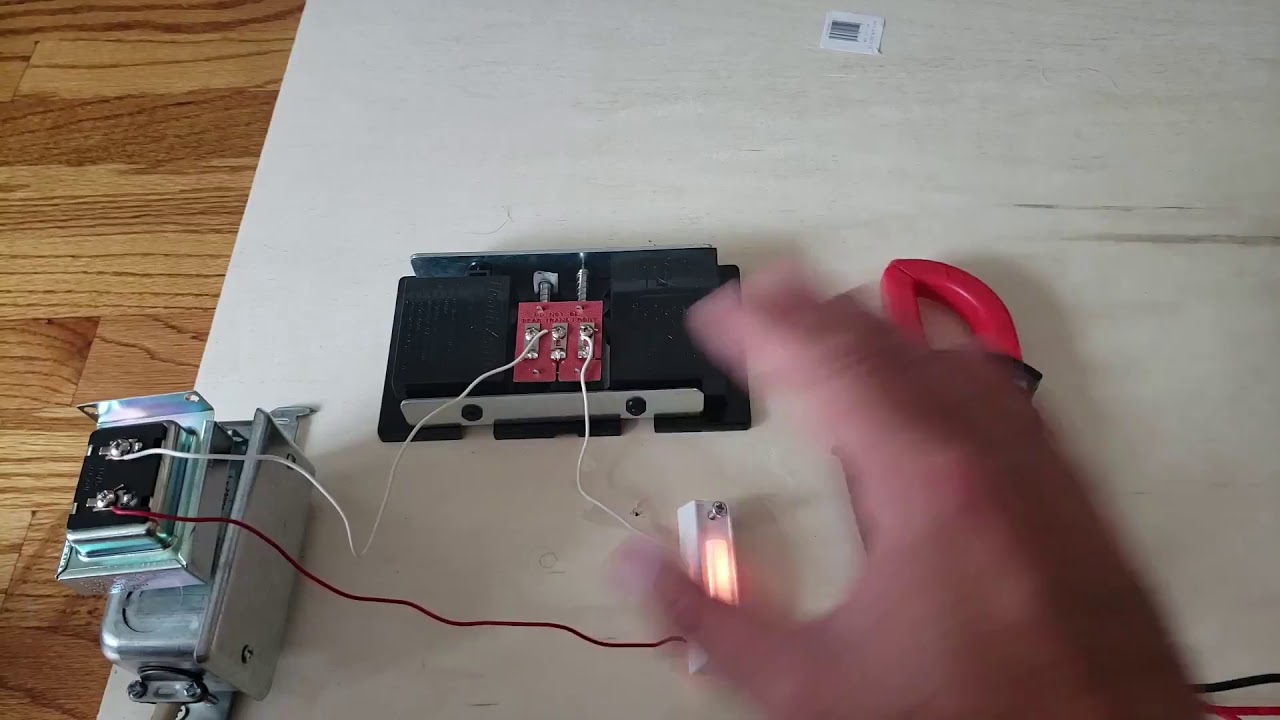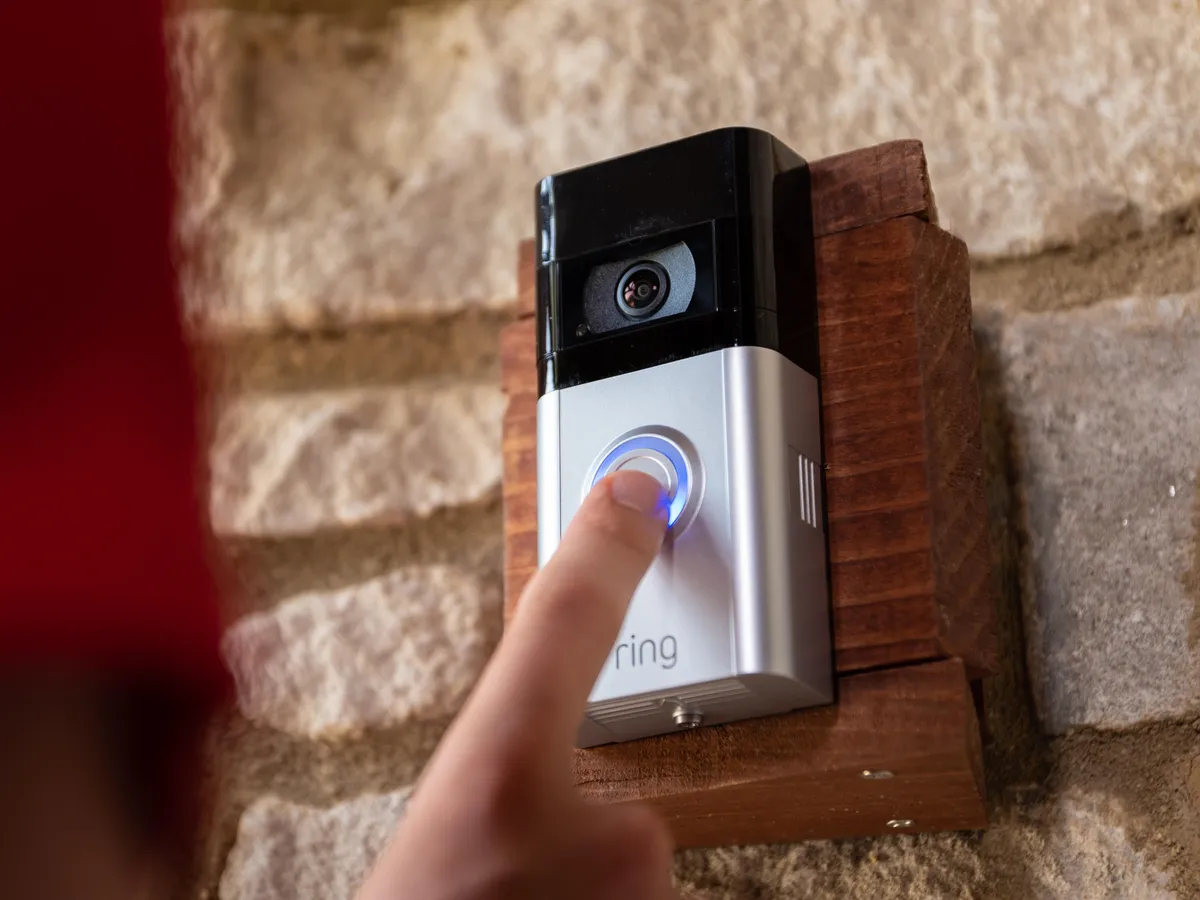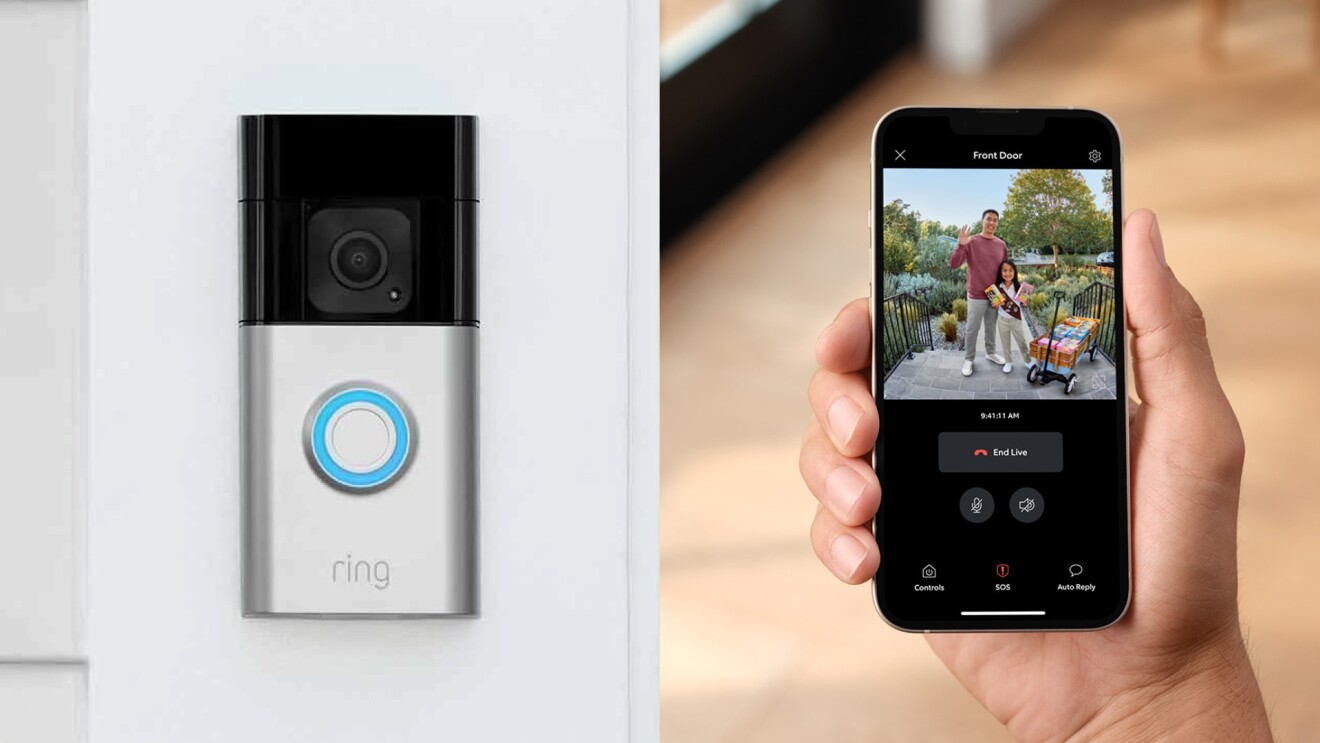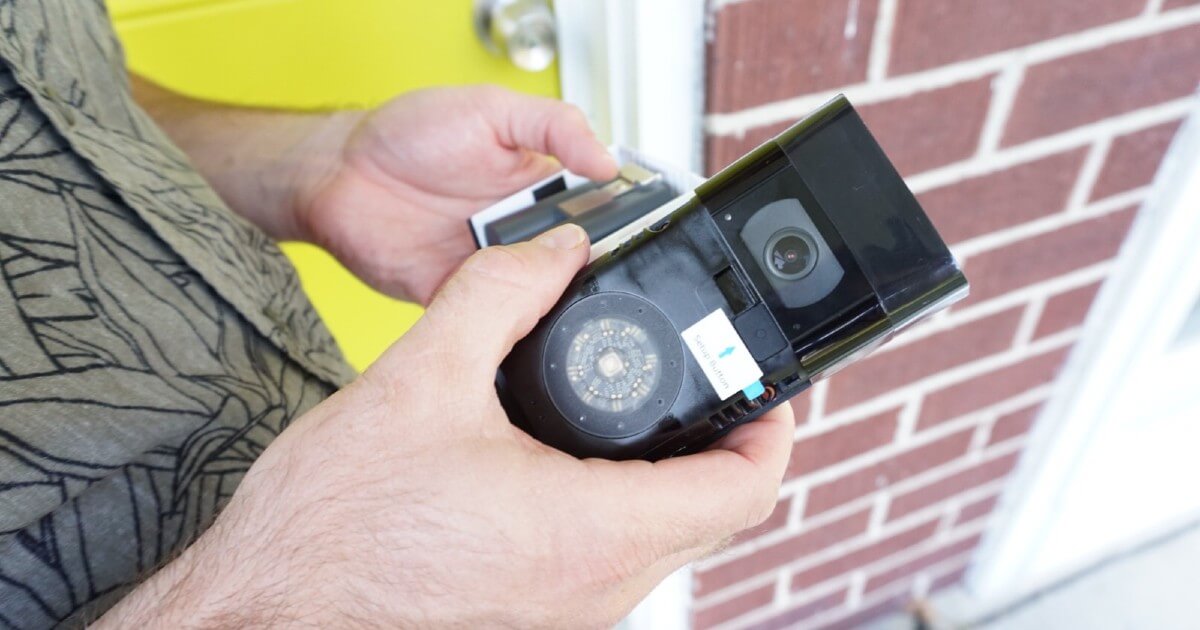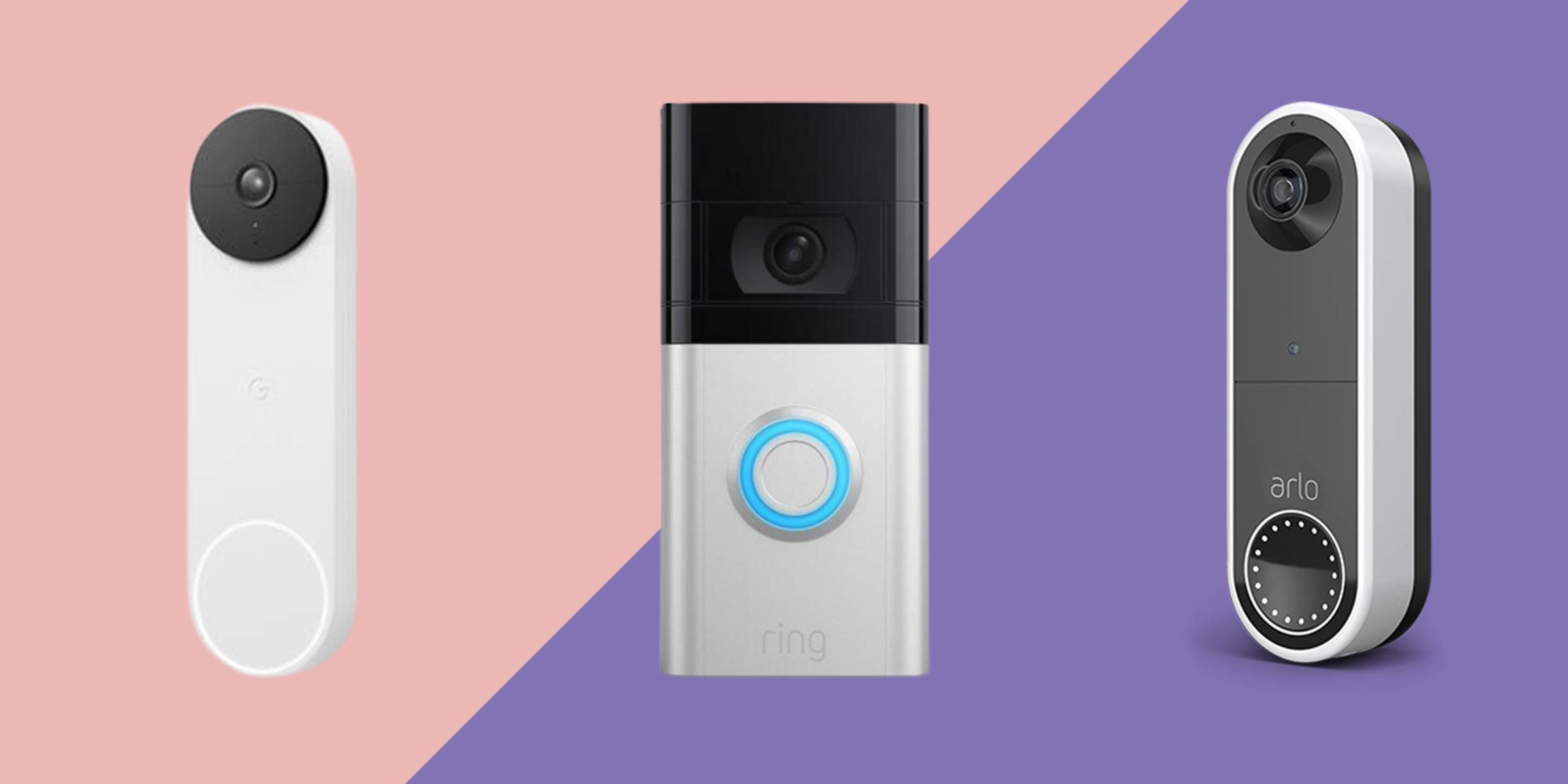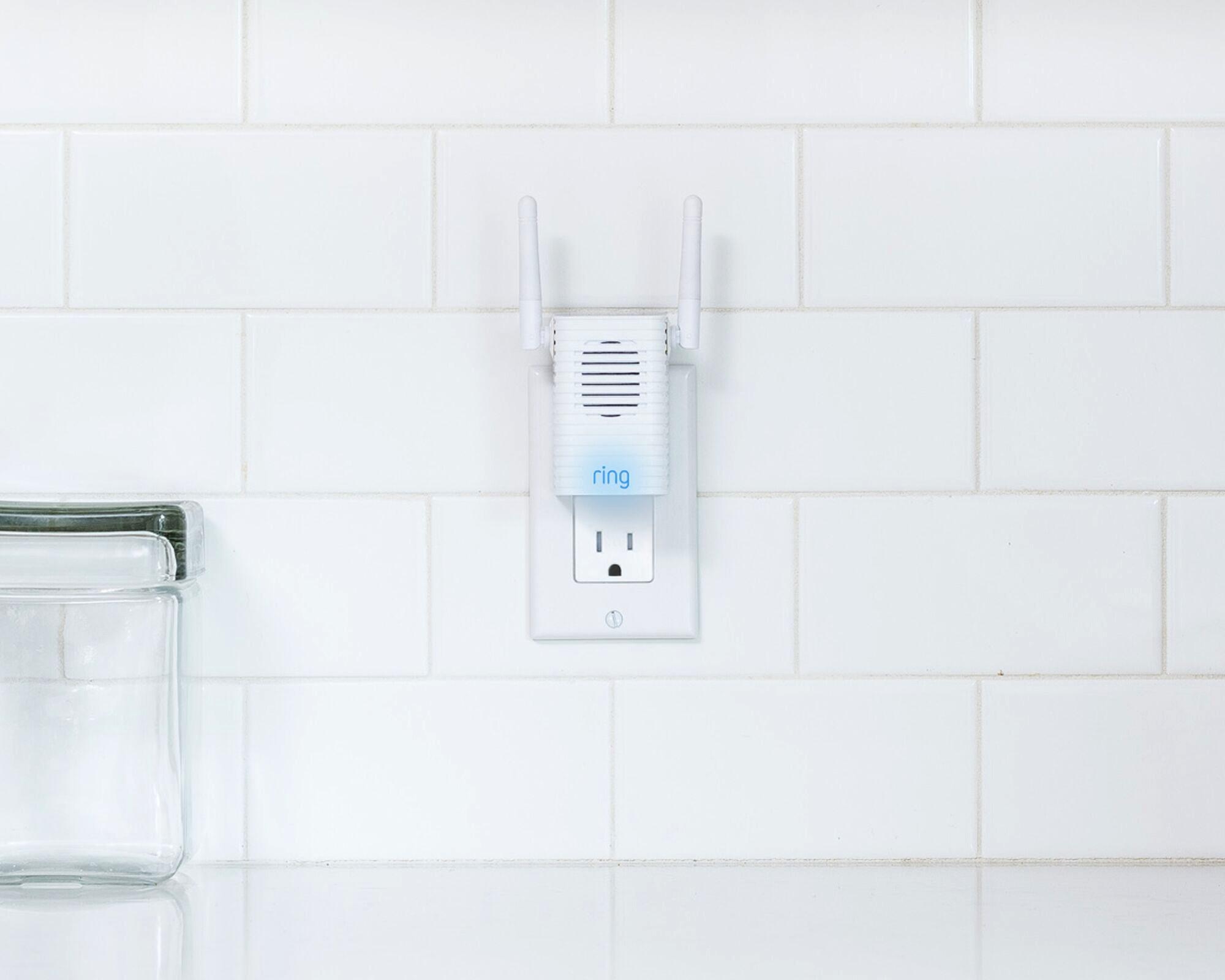Introduction
The Ring Video Doorbell has become increasingly popular in recent years as a home security solution. With its ability to stream live video and allow users to interact with visitors remotely, it offers convenience and peace of mind. However, one important aspect that users need to consider is the amount of data that the Ring Video Doorbell utilizes.
Understanding the data usage of the Ring Video Doorbell is crucial, especially for those with limited data plans or in areas with slow internet connections. By having a clear understanding of how much data the device consumes, users can make informed decisions on their internet plan and take necessary steps to manage and optimize their data usage.
In this article, we will delve into the specifics of Ring Video Doorbell data usage, explore the factors that can affect it, and provide tips for monitoring and reducing data consumption. Whether you’re a new Ring Video Doorbell user or considering purchasing one, this information will help you make the most out of your device without breaking the bank.
Understanding Ring Video Doorbell Data Usage
Before we dive into managing and limiting data usage, it’s important to understand how the Ring Video Doorbell utilizes data. The device relies on your home internet connection to transmit video and audio data from your doorbell to your smartphone or tablet. Let’s take a closer look at how this data usage occurs:
Video Streaming: When someone rings your doorbell or the motion sensors are triggered, the Ring Video Doorbell starts streaming live video to your device. This video stream consumes a significant amount of data. The higher the video quality settings, the more data will be used.
Audio Transmission: In addition to video, the Ring Video Doorbell also transmits audio signals. This data is sent to allow you to communicate with the person at your doorstep. While audio data usage is not as high as video, it still contributes to the overall data consumption.
Notifications and App Usage: The Ring app sends notifications to your device whenever there is activity detected at your door. These notifications, along with other app usage, require a small amount of data. However, the data used for notifications is minimal compared to video and audio streaming.
It’s essential to note that the amount of data consumed will depend on various factors, such as the length of the video stream, the frequency of doorbell activations, and the settings you have configured in the Ring app.
Now that you have a basic understanding of how the Ring Video Doorbell utilizes data, let’s explore the factors that can influence data usage. By being aware of these factors, you’ll be better equipped to manage and optimize your device’s data consumption.
Factors Affecting Ring Video Doorbell Data Usage
Several factors can influence the amount of data that your Ring Video Doorbell consumes. Understanding these factors will help you make informed decisions and manage your data usage effectively. Let’s take a look at the key factors:
Video Quality Settings: The video quality setting you choose in the Ring app can have a significant impact on data usage. Higher quality settings, such as 1080p HD, will consume more data compared to lower quality options. It’s important to find the right balance between video quality and data consumption based on your needs.
Duration of Video Streams: The length of time your Ring Video Doorbell streams video will affect data usage. If you have frequent activity at your doorstep or extended conversations through the device, it will result in higher data consumption. Consider adjusting motion detection sensitivity and optimizing settings to reduce unnecessary video streams.
Frequency of Doorbell Activations: The number of times your Ring Video Doorbell is activated throughout the day will impact data usage. For instance, if you live in a busy neighborhood with frequent visitors or delivery drivers, it’s likely that your doorbell will be triggered more often, leading to increased data usage.
Internet Connection Speed: A stable and fast internet connection is crucial for streaming video without buffering or interruptions. If you have a slow internet connection, your Ring Video Doorbell may struggle to transmit high-quality video smoothly. This can lead to rebuffering or lower video quality, affecting both your viewing experience and data consumption.
Signal Strength: The signal strength between your Ring Video Doorbell and your home Wi-Fi network also plays a role in data usage. A weak signal can result in dropped or delayed video streams, requiring retransmission and ultimately increasing data usage. Ensure that your doorbell is within the range of a strong and stable Wi-Fi signal to minimize data consumption.
Customization of Settings: The Ring app offers various customization options, including motion detection zones, sensitivity settings, and activity history duration. Adjusting these settings according to your specific needs can help reduce unnecessary motion alerts and limit the amount of video data recorded and transmitted.
By considering these factors and optimizing your Ring Video Doorbell settings, you can effectively manage and control the data usage of your device. In the next section, we will explore ways to monitor and limit data consumption to ensure efficient utilization of your internet plan.
How to Monitor and Limit Ring Video Doorbell Data Usage
Monitoring and controlling the data usage of your Ring Video Doorbell is essential to avoid exceeding your data cap or experiencing slow internet speeds. Here are some strategies to help you effectively monitor and limit data consumption:
Check Your Data Usage: Keep track of your internet data usage, especially if you have a data cap on your internet plan. Most internet service providers offer online portals or mobile apps where you can view your data usage. Regularly monitoring your data usage will give you a better understanding of how much data your Ring Video Doorbell consumes.
Optimize Video Quality: Adjust the video quality settings in the Ring app to find the right balance between video clarity and data usage. Lower video quality settings, such as 720p, can significantly reduce data consumption. Experiment with different settings to find the optimal balance for your needs.
Customize Motion Detection: Refine the motion detection settings in the Ring app to reduce unnecessary video recording and streaming. By adjusting the motion detection zones, sensitivity levels, and notification settings, you can minimize false alarms and limit data usage to genuine events at your doorstep.
Schedule Notifications: Schedule notifications for specific times or events to avoid constant streaming and reduce data usage. For example, you can set notifications only during certain hours of the day or when you’re away from home to minimize the continuous streaming of video and audio data.
Review Event History: Regularly review the event history in the Ring app to identify any unusual or excessive data usage patterns. This can help you identify any potential issues or excessive data consumption that needs to be addressed.
Manage Live Video Streaming: Avoid continuously streaming live video unless necessary. While it can be convenient to leave the video stream open continuously, it significantly contributes to data usage. Instead, use the live view sparingly and close the stream when not actively monitoring the doorstep.
Consider Wi-Fi Network Optimization: Optimize your home Wi-Fi network for better signal strength and stability. Ensure that your router is positioned in a central location and away from any obstructions. Consider using Wi-Fi extenders or a mesh network system to improve signal strength near the doorbell, reducing the chances of rebuffering and data retransmissions.
By implementing these strategies, you can effectively monitor and control the data usage of your Ring Video Doorbell, ensuring efficient utilization of your internet plan. In the next section, we will discuss the ideal internet plan for a seamless Ring Video Doorbell experience.
The Ideal Internet Plan for Ring Video Doorbell
Choosing the right internet plan is essential for a seamless and uninterrupted Ring Video Doorbell experience. Here are some factors to consider when selecting an internet plan:
Internet Speed: Opt for an internet plan with sufficient speed to support the video streaming capabilities of the Ring Video Doorbell. A minimum download speed of 2 Mbps is recommended, but higher speeds will provide a smoother viewing experience. Check with your internet service provider to determine the available speed options in your area.
Data Cap: Consider whether the internet plan you’re considering has a data cap or offers unlimited data. Ring Video Doorbell data consumption can add up over time, so having an unlimited data plan can give you peace of mind without worrying about exceeding data limits. If the plan has a data cap, ensure that it provides enough data allowance to support your usage.
Stability and Reliability: Look for an internet service provider with a reputation for stable and reliable connections. A reliable connection is crucial for uninterrupted video streaming and real-time communication with the Ring Video Doorbell. Research customer reviews and check for any potential issues with downtime or unreliable service.
Customer Support: Consider the quality of customer support provided by the internet service provider. In case of any technical issues or concerns related to your Ring Video Doorbell, having responsive and helpful customer support can make a significant difference in resolving problems effectively.
Budget: Take into account your budget and compare the prices of internet plans from different providers. Look for any promotional offers, bundles, or discounts that can help you save money without compromising on the internet quality and data allowance you need for your Ring Video Doorbell.
Consider Upgrading: If you already have an existing internet plan but find that it doesn’t meet your Ring Video Doorbell’s data and speed requirements, consider upgrading to a higher-tier plan. Upgrading can ensure smoother streaming, reduced buffering, and improved overall performance of your device.
By carefully considering these factors and selecting an internet plan that meets your specific needs, you can optimize your Ring Video Doorbell experience and ensure seamless functionality with minimal interruptions or limitations.
Tips for Reducing Ring Video Doorbell Data Usage
Reducing the data usage of your Ring Video Doorbell can help you stay within your data cap, avoid slow internet speeds, and optimize your overall internet experience. Here are some tips to help you minimize data consumption:
Adjust Video Quality: Lowering the video quality settings in the Ring app can significantly reduce data usage. While high-quality video is desirable, consider finding a balance between image clarity and data consumption by opting for lower resolution settings.
Optimize Motion Detection: Refine the motion detection settings in the Ring app to ensure that the doorbell is triggered only by significant events. Adjust the sensitivity, motion zones, and activity schedules to avoid unnecessary recordings and minimize data usage.
Enable Snapshot Capture: Turning on the snapshot capture feature in the Ring app allows you to receive periodic snapshots of your doorstep instead of continuous video streaming. This can significantly reduce data consumption while still providing you with a glimpse of activity at your door.
Set Recording Length: Adjust the recording length setting in the Ring app to limit the duration of recorded videos. Shorter recording lengths can help save data, especially if there is frequent activity at your doorstep throughout the day.
Utilize Motion Snooze: If you know that there will be a period of continuous activity or motion at your doorstep, consider using the motion snooze feature. This temporarily disables motion detection, reducing unnecessary recordings and data usage during that time.
Limit Live Video Viewing: While the live video feature is handy, try to limit your usage and avoid continuously streaming video unless necessary. Open the live view sparingly and close the stream when you no longer need to monitor your doorstep actively.
Monitor Data Usage: Keep track of your Ring Video Doorbell’s data usage by regularly checking your internet service provider’s data usage tools. This will help you identify any spikes in data consumption and adjust your settings accordingly.
Optimize Wi-Fi Network: Ensure that your Wi-Fi network is optimized for better signal strength and stability. Position your router strategically and consider using Wi-Fi extenders or a mesh network system to improve coverage near the doorbell. A stable connection can reduce data retransmissions and buffering.
Update Firmware Regularly: Keep your Ring Video Doorbell up to date with the latest firmware updates. These updates not only improve performance but may also include optimizations for reducing data usage.
By applying these tips and techniques, you can effectively reduce the data consumption of your Ring Video Doorbell while still enjoying its essential features and functionalities. Remember to find a balance between conserving data and maintaining the level of security and convenience that the device provides.
Frequently Asked Questions about Ring Video Doorbell Data Usage
Here are the answers to some common questions regarding the data usage of Ring Video Doorbell:
Q: Does the Ring Video Doorbell use a lot of data?
A: The data usage of the Ring Video Doorbell depends on various factors, such as the video quality settings, duration of video streams, and frequency of doorbell activations. It is recommended to adjust settings and optimize usage to minimize data consumption.
Q: How much data does the Ring Video Doorbell use per month?
A: The monthly data usage of the Ring Video Doorbell can vary based on individual usage patterns. Higher quality video settings and frequent doorbell activations can increase data consumption. It is advisable to monitor your data usage regularly to get a better understanding of your device’s data consumption.
Q: Can I control how much data my Ring Video Doorbell uses?
A: Yes, you can control the data usage of your Ring Video Doorbell. By adjusting video quality settings, customizing motion detection, limiting live video viewing, and optimizing Wi-Fi network, you can effectively manage and reduce data consumption
Q: Will a slow internet connection affect the performance and data usage of my Ring Video Doorbell?
A: Yes, a slow internet connection can impact the performance of your Ring Video Doorbell. It can lead to buffering, delays in video streaming, and increased data consumption due to retransmissions. It is best to have a stable and fast internet connection to ensure optimal performance and minimize data usage.
Q: Can I view Ring Video Doorbell footage without using data?
A: No, viewing Ring Video Doorbell footage requires an internet connection and hence uses data. However, you can optimize settings to reduce unnecessary video streaming and limit data consumption.
Q: Does using the Ring app on my smartphone contribute to data usage?
A: Yes, using the Ring app on your smartphone consumes a small amount of data, especially when receiving notifications or viewing live video streams. However, the data used for app usage is significantly lower compared to the data consumed by video streaming.
Q: Can I set specific time intervals for my Ring Video Doorbell to consume less data?
A: Yes, you can schedule notifications and set specific time intervals during which your Ring Video Doorbell consumes less data. This can be useful when you know that there will be periods of continuous activity at your doorstep, reducing unnecessary video streaming and conserving data.
Q: Can I adjust the video quality settings only when needed?
A: Yes, the video quality settings in the Ring app can be adjusted whenever needed. If you want to conserve data, you can lower the video quality during periods of high data usage or when you anticipate limited data availability.
Q: Will reducing data usage affect the overall performance of my Ring Video Doorbell?
A: Reducing data usage by optimizing settings will not negatively impact the overall performance of your Ring Video Doorbell. It will help conserve data while maintaining the core functionalities of the device, such as video streaming and communication with visitors.
These frequently asked questions provide insights into important aspects of Ring Video Doorbell data usage, helping you make informed decisions and manage your data effectively.
Conclusion
Understanding and managing the data usage of your Ring Video Doorbell is essential for optimizing your internet plan, preventing data cap overages, and ensuring a seamless user experience. By considering factors such as video quality settings, duration of video streams, and frequency of doorbell activations, you can effectively monitor and control data consumption. Additionally, implementing strategies such as adjusting motion detection settings, optimizing Wi-Fi network, and scheduling notifications can further reduce data usage without compromising the functionality of your device.
Choosing an internet plan that suits your Ring Video Doorbell’s data and speed requirements is crucial for a smooth and uninterrupted experience. Look for plans with adequate speed, consider data caps, prioritize stability and reliability, and factor in your budget. Upgrading your plan may be necessary if you find that your current plan does not meet your device’s needs.
Remember to regularly monitor your data usage, review settings, and update firmware to ensure optimal performance. By following the tips and techniques discussed in this article, you can minimize data consumption, avoid excessive usage charges, and maintain a reliable and efficient Ring Video Doorbell system.
Stay informed, stay mindful of your data usage, and enjoy the convenience and security that the Ring Video Doorbell provides.










